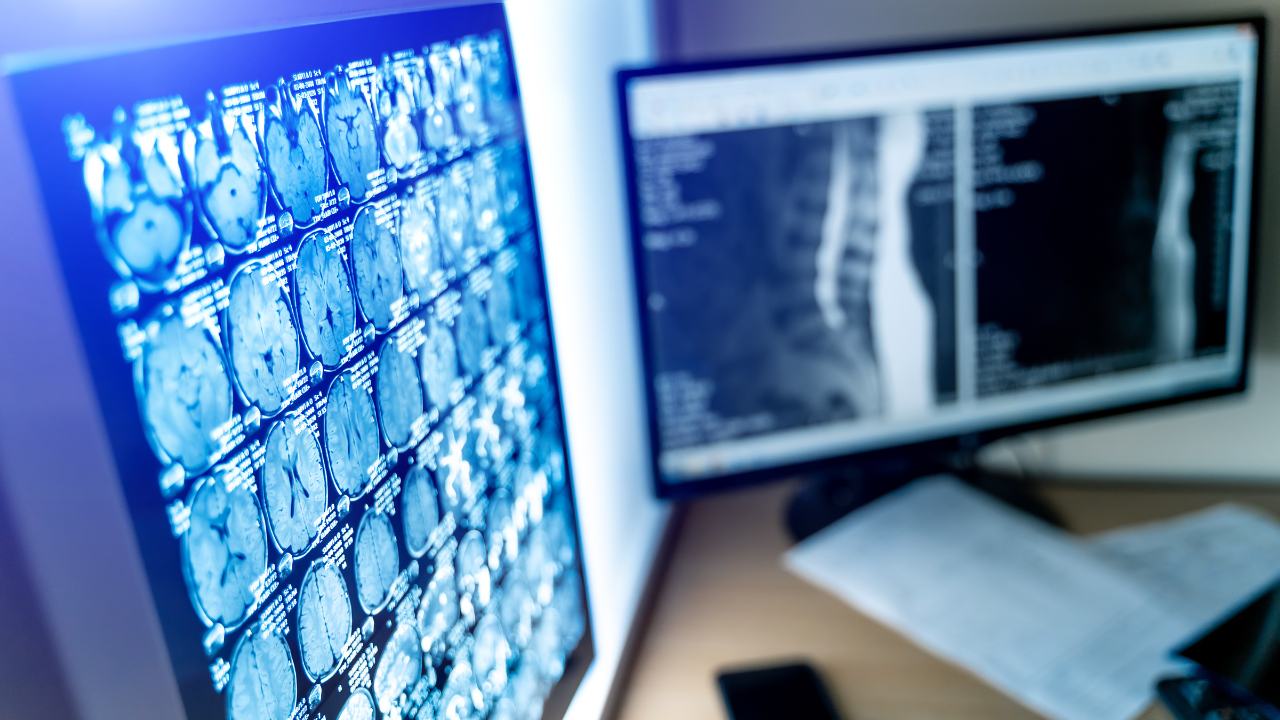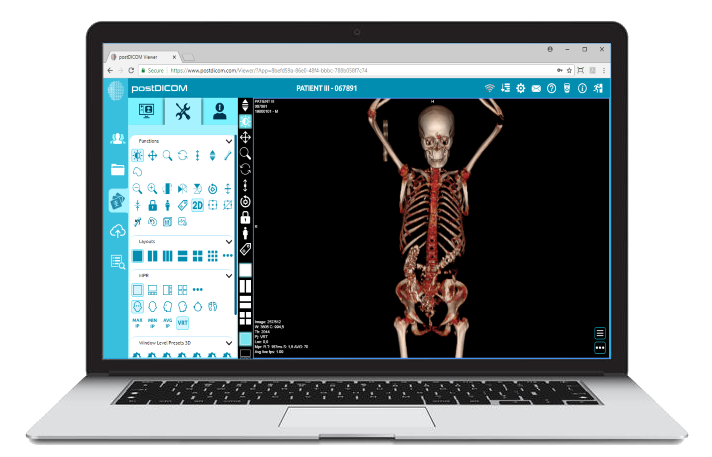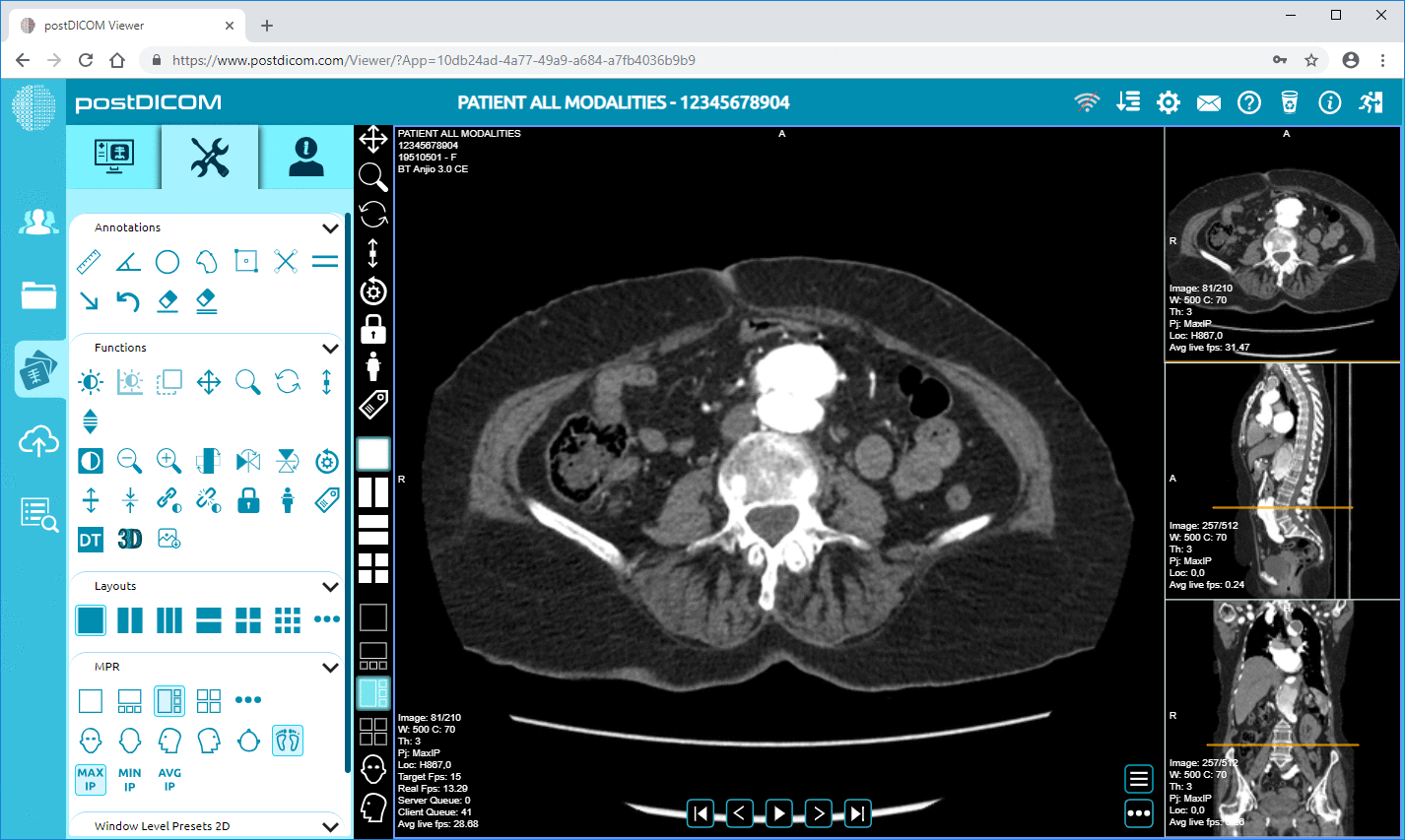
DICOM (Digital Imaging and Communications in Medicine) is the international standard that facilitates the exchange of medical images and related data across various devices and systems.
It enables the integrating of medical imaging devices, such as scanners, servers, workstations, printers, network hardware, and picture archiving and communication systems (PACS) from different manufacturers.
A key component of the DICOM standard is Transfer Syntax, which defines how DICOM data is encoded and transmitted between systems. This ensures that medical images and associated data can be accurately shared across different systems and devices.
A DICOM Transfer Syntax is a set of encoding rules that provides an unambiguous representation of one or more Abstract Syntaxes. It allows communicating Application Entities to negotiate common encoding techniques they both support, such as byte ordering and compression methods.
A Transfer Syntax is an attribute of a Presentation Context, one or more of which are negotiated at the establishment of an Association between DICOM Application Entities.
DICOM defines a Default Transfer Syntax, the DICOM Implicit VR Little Endian Transfer Syntax (identified by Transfer Syntax UID = "1.2.840.10008.1.2"). Every conformant DICOM Implementation shall support this default Transfer Syntax.
DICOM Transfer Syntax plays a crucial role in medical imaging workflows by ensuring interoperability, efficiency, and flexibility.
• Interoperability: Different imaging devices and software from various manufacturers can work together seamlessly based on the Transfer Syntaxes they both support. This interoperability extends beyond the hospital setting, facilitating teleradiology and telemedicine by enabling the exchange of medical images outside the hospital.
• Efficiency: By using compressed formats, images can be transmitted more quickly and take up less storage space.
• Flexibility: Users can choose a Transfer Syntax based on their specific needs, such as lossless or lossy compression.
DICOM transfer syntax defines two main aspects of DICOM files:
• Data Encoding: This specifies how the data elements within a DICOM file are encoded, primarily affecting the image compression algorithm, which can impact both file size and image quality.
• Byte Order: This determines how multi-byte data types, such as integers and floating-point numbers, are represented in the file. The two common byte orders are Little Endian and Big Endian, which dictate the order in which bytes are arranged to represent these data types.
Transfer Syntax also governs the serialization of DICOM objects, which converts the object into a byte stream for transmission or storage.
A DICOM file consists of:
• File Header: Contains a 128-byte preamble, a 4-byte prefix ('D', 'I', 'C', 'M'), and File Meta Information.
• Data Set: Represents a single SOP Instance related to a single SOP Class. The Transfer Syntax used to encode the Data Set is identified by the Transfer Syntax UID of the DICOM File Meta Information.
DICOM Transfer Syntax ensures that images from different modalities, such as X-ray, CT, and MRI, can be exchanged and interpreted correctly by different systems.
For example, a CT scanner can send images to a PACS using a specific Transfer Syntax, and a radiologist can view those images on a workstation using the same Transfer Syntax.
This standardization is crucial for maintaining consistency and accuracy in medical image interpretation across various modalities.
• Reduced Errors: DICOM provides a standardized way to store, send, and receive medical images and information without the need for manual data entry, which reduces errors and improves efficiency.
• Improved Efficiency: Electronic transfer of medical images using the DICOM standard has made health systems far more efficient. This can help providers diagnose patients more quickly and begin treatments immediately.
• Better Diagnosis And Patient Care: Implementing DICOM facilitates access to information and diagnosis. The interoperability of DICOM-compliant devices ensures that physicians can access medical data worldwide.
• Improved Workflow: Manual filing, retrieval, and transport of folders are a thing of the past in medical imaging.
• Structured Reporting: DICOM allows for the creation of structured reports, which can benefit collaboration and research.
• Compatibility Issues: Different vendors might introduce variations in their DICOM implementations, which can lead to compatibility issues.
• Data-related Challenges: Inconsistencies in data formats, variations in metadata tagging, or even differences in how patient information is recorded can hinder seamless data exchange.
• Security Concerns: Secure DICOM implementations may require additional encryption and authentication processes, which can introduce delays or technical issues in the transmission of medical images.
• Performance Issues: Secure DICOM protocols can introduce latency and increase processing times, which is a critical concern in clinical environments where rapid access to medical images is essential.
• Compression Limitations: While compression techniques like Run-Length Encoding (RLE) can reduce file sizes, they may be less effective for certain types of medical images, potentially leading to larger file sizes and reduced image quality.
 - Presented by PostDICOM.jpg)
DICOM Transfer Syntaxes are defined and registered by NEMA (National Electrical Manufacturers Association). NEMA guarantees uniqueness for all DICOM Transfer Syntax Names. Privately defined Transfer Syntax Names may also be used; however, they will not be registered by NEMA.
Transfer syntax sets the following:
• The Byte Order (little/big Endian)
• Whether Vrs (value Representations) Are Serialized (explicit/implicit)
• Whether Pixel Data Is Compressed Or Not
The following table lists the available DICOM Transfer Syntaxes and their corresponding UIDs:
| Transfer Syntax UID | Transfer Syntax Name |
|---|---|
| 1.2.840.10008.1.2 | Implicit VR Endian: Default Transfer Syntax for DICOM |
| 1.2.840.10008.1.2.1 | Explicit VR Little Endian |
| 1.2.840.10008.1.2.1.99 | Deflated Explicit VR Little Endian |
| 1.2.840.10008.1.2.2 | Explicit VR Big Endian |
| 1.2.840.10008.1.2.4.50 | JPEG Baseline (Process 1): Default Transfer Syntax for Lossy JPEG 8-bit Image Compression |
| 1.2.840.10008.1.2.4.51 | JPEG Baseline (Processes 2 & 4): Default Transfer Syntax for Lossy JPEG 12-bit Image Compression (Process 4 only) |
| 1.2.840.10008.1.2.4.57 | JPEG Lossless, Nonhierarchical (Processes 14) |
| 1.2.840.10008.1.2.4.70 | JPEG Lossless, Nonhierarchical, First- Order Prediction (Processes 14): Default Transfer Syntax for Lossless JPEG Image Compression |
| 1.2.840.10008.1.2.4.80 | JPEG-LS Lossless Image...source |
| 1.2.840.10008.1.2.4.95 | JPIP Referenced Deflate |
| 1.2.840.10008.1.2.5 | RLE Lossless |
| 1.2.840.10008.1.2.6.1 | RFC 2557 MIME Encapsulation |
| 1.2.840.10008.1.2.4.100 | MPEG2 Main Profile Main Level |
| 1.2.840.10008.1.2.4.102 | MPEG-4 AVC/H.264 High Profile / Level 4.1 |
| 1.2.840.10008.1.2.4.103 | MPEG-4 AVC/H.264 BD-compatible High Profile / Level 4.1 |
DICOM Transfer Syntax is a crucial element of the DICOM standard, enabling the efficient and reliable exchange of medical images and related information. It ensures interoperability between different medical imaging devices and systems, improves workflow efficiency, and enhances patient care by:
• Providing A Standardized Format For Encoding And Transmitting Medical Image Data.
• Facilitating Communication Between Different Medical Imaging Devices And Systems.
• Allowing For Efficient Compression Of Medical Images.
• Supporting Various Image Modalities, Including X-ray, Ct, And Mri.
While DICOM Transfer Syntax can present challenges such as compatibility issues and security concerns, the benefits outweigh the drawbacks, making it an essential technology in modern medical imaging.
DICOM Transfer Syntax is a fundamental component of the DICOM standard. It enables the efficient and reliable exchange of medical images and related information. It ensures interoperability between medical imaging devices and systems, improves workflow efficiency, and enhances patient care.
While challenges are associated with using DICOM Transfer Syntax, the benefits outweigh the drawbacks, making it an essential technology in modern medical imaging. By promoting interoperability and standardization, DICOM Transfer Syntax plays a vital role in improving patient care and advancing the field of medical imaging.


|
Cloud PACS and Online DICOM ViewerUpload DICOM images and clinical documents to PostDICOM servers. Store, view, collaborate, and share your medical imaging files. |